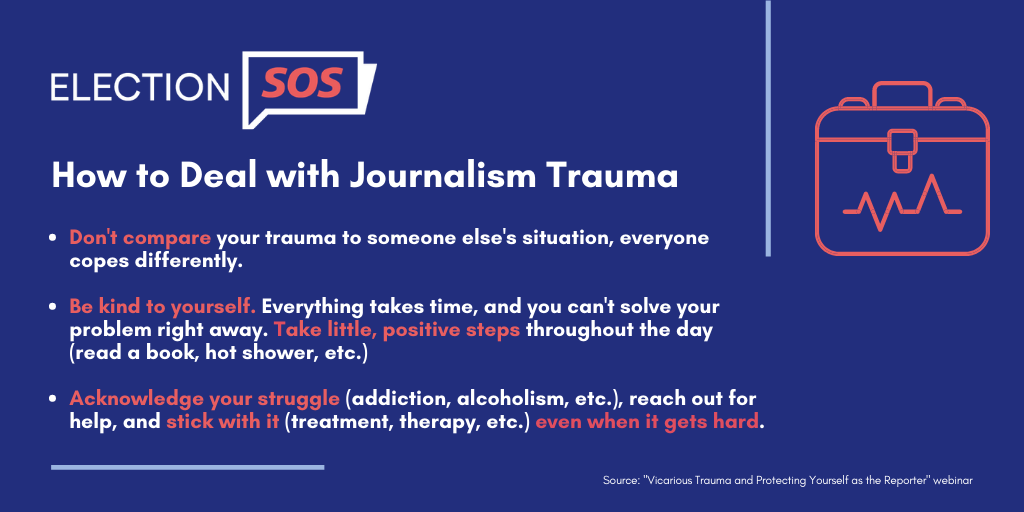
Election SOS First Aid Kit: Trauma in Journalism
article
It’s an overwhelming time to be a journalist. Covering mob violence, police brutality, natural disasters, civil unrest, and a magnitude of other issues all amidst a pandemic can be traumatizing. It’s important to find time for yourself and seek help when needed. Here’s are some tips and resources for coping with trauma and exposure to violence on the job:
Protect Yourself
- Develop a plan to stay safe while covering conflict
- Also, make sure your newsroom knows how to support you
- Watch this training to learn about vicarious trauma and protecting yourself
- And be sure to build an action plan for yourself, too!
Recognize the Symptoms
- Read the Committee to Protect Journalist’s note on Psychological Safety for a list of possible symptoms of trauma
- Take Poynter’s free, self-directed course on journalism and trauma to recognize possible symptoms of trauma in yourself or your colleagues
- Bookmark a roundup by Journalist’s Resources on how trauma affects journalists’ mental health
Take Care of Yourself
- Check out the Dart Center for Journalism and Trauma’s Toolkit for Resilience
- The Carter Center has put together an ongoing list of COVID-19 mental health resources for journalists
- The International Women’s Media Foundation Black Journalists Therapy Relief Fund gives funding to cover therapy costs for Black journalists dealing with trauma. The IWMF also provides yoga for journalists.
- Al and Sidney Tompkins give advice on how journalists can fight stress from covering the coronavirus
- Journalists as vicarious first responders, by the American Psychological Association
- Leading Resilience: A Guide for Editors and News Managers by the Dart Center and ACOS Alliance

Additional Resources
- Election SOS – First Aid Kit on Covering Conflict
- Election SOS – First Aid Kit: Safety Checklists
- Also check out our Expert Database, to connect with a vetted trauma expert.
